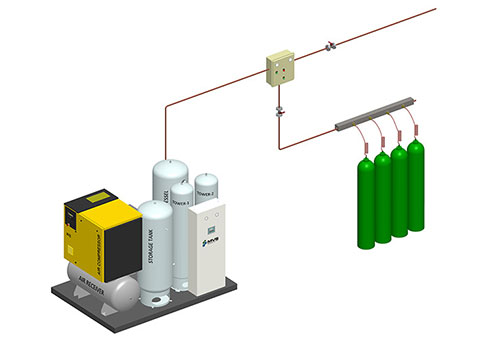We know more than 65% of the human body is oxygen. Oxygen is essential for breathing, the cycle that moves energy from glucose to cells. Every cell in our body requires oxygen. At the point when we inhale air in, oxygen atoms enter the lungs and pass through lung dividers into our blood. Since we really want oxygen to endure thus, oxygen’s significance in the field of medical services can’t be undervalued. Oxygen is an essential life-saving drug with no substitution but most clinicians and most patients don’t see it as a drug. Hence, the utilization of clinical oxygen in the most recent century has been driven by custom, practice, and “precautionary principles” rather than by scientific principles.
Industrial oxygen vs medicinal oxygen
Oxygen is accessible for industrial and medical applications on the market. In terms of purity and quality, medical oxygen differs significantly from industrial oxygen. As a result, industrial and medical applications are not interchangeable.

Industrial oxygen is not meant for human consumption. Only medical oxygen that has been tested to satisfy allowed requirements for identity, purity, and content, as well as produced, stored, and distributed according to best practices, should be given to the patient. Uncertainties about the purity and content of industrial oxygen, the possibility of particle and microbiological contamination, and improperly planned performed, and controlled production, storage, and distribution procedures might result in unacceptable risks for patients.
Also Read
Meet The Soaring Oxygen Demand With MVS Medical Oxygen Generators
On-Site Gas Generation Should Be Made Mandatory For Hospitals
Medical oxygen can be created in a variety of methods. The purification values of medicinal oxygen vary depending on the source and manufacturing method:
For oxygen produced by the air-liquefaction process, the International Pharmacopoeia defines the requirements of oxygen as not less than 99.5% v/v of O2.
For Pressure Swing Adsorption (PSA) plants, the WHO interim guidance technical specifications for PSA plants specifies: “pressure swing adsorption technology to produce medical oxygen 93%±3 from ambient air.”
For oxygen concentrators, the WHO-UNICEF technical specifications and guidance for oxygen therapy devices specifies “The concentrator should include delivery of low-flow, continuous, clean and concentrated oxygen (> 82%) from room air (21%)”
Use of oxygen across the health system
Oxygen is a necessary component of medicine. Respiratory disorders such as COVID-19 and pneumonia are treated with oxygen by healthcare specialists. Surgery and trauma require oxygen as well. The elderly, pregnant women and newborns all require oxygen regularly. Medical oxygen is required at several levels of the healthcare system. The following units in the health care system consume oxygen:
- Primary health care
- General wards
- Emergency transport
- Delivery rooms
- Surgical rooms
- Intensive care units (ICU)
- Specialized hospitals
- Outpatient units
- Hyperbaric chambers
For more information on Medical Oxygen Generators, please reach out to our team at +91 (11) 4999 7000 or write to us at sales@mvsengg.com.

